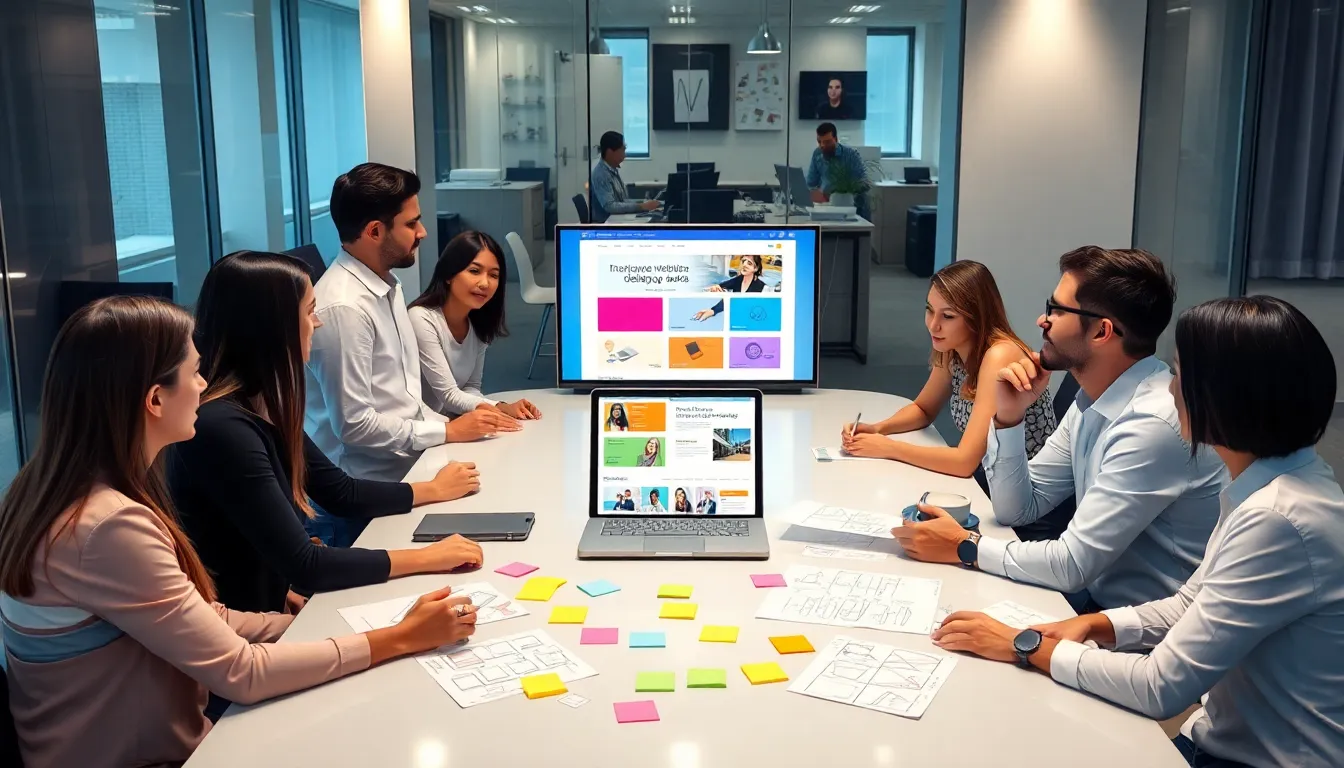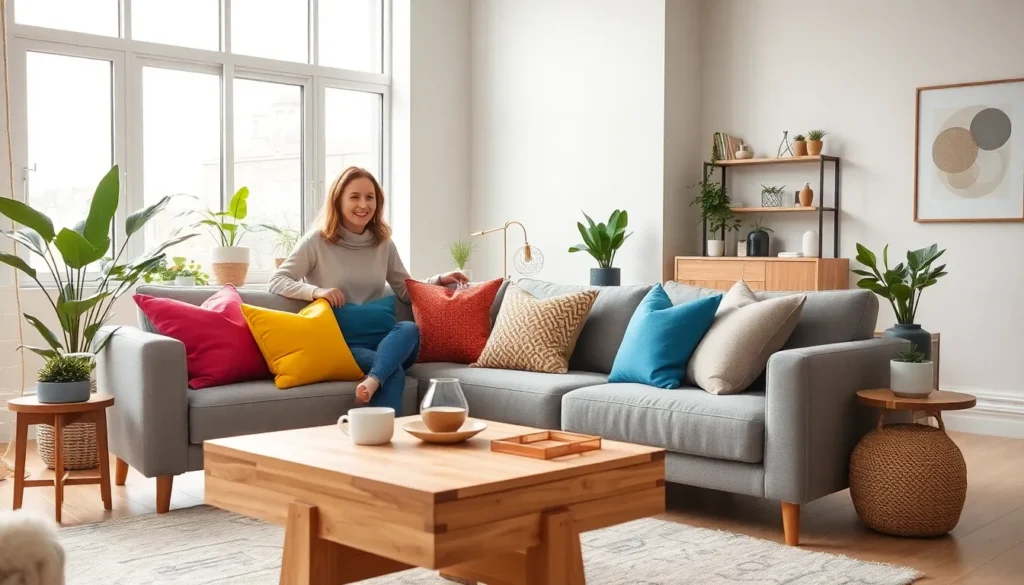In the vast digital ocean, a website is like a ship navigating through waves of information. Great design concepts are the wind in its sails, propelling it toward success. Without them, a site can drift aimlessly, leaving visitors feeling lost and confused. Who wants to be the captain of a sinking ship?
Table of Contents
ToggleUnderstanding Website Design Concepts
Great website design concepts shape user experiences. They create aesthetic appeal, enhance functionality, and drive engagement.
Importance of Effective Design
Effective design influences first impressions. Studies show that 94% of users associate design with credibility. Visual elements like color, typography, and layout set expectations. Users expect intuitive navigation and clear information presentation. A well-designed site leads to increased traffic and conversion rates. Research indicates that 38% of users stop engaging with poorly designed websites. Prioritizing design concepts helps prevent a digital ship from capsizing in a crowded online sea.
User Experience and Usability
User experience defines how visitors interact with a website. Factors like loading speed and responsive design influence satisfaction. Engagement increases when users find what they’re looking for quickly. According to studies, 88% of online shoppers won’t return after a bad experience. Usability ensures that website functionality meets user needs. Simple, clear navigation aids in reducing frustration. Building user-friendly sites keeps visitors anchored, guiding them toward desired actions.
Key Elements of Website Design

Effective website design hinges on several critical elements. Each component contributes to creating an engaging user experience that encourages interaction and retention.
Layout and Structure
An intuitive layout ensures users navigate easily. Grids and columns organize content, creating a visual hierarchy that guides the eye. Consistent spacing enhances readability and fosters a clean aesthetic. A logical structure allows users to find information quickly without feeling overwhelmed. Emphasizing key information with contrasting elements captures attention and reinforces重要性. Additionally, responsive design adapts to various screen sizes, providing a seamless experience on desktop and mobile devices. This adaptability is crucial, especially since 52% of global web traffic comes from mobile devices.
Color Scheme and Typography
Colors evoke emotions and set the mood of a website. A cohesive color scheme aligns with branding, improving recognition and memorability. Studies show that colors increase brand recognition by 80%. Typography communicates tone and identity, influencing readability. Choosing complementary fonts maintains consistency across headings and body text. Additionally, legible fonts promote accessibility, catering to a broader audience. Applying appropriate font sizes enhances user experience by making content easy to digest. The combination of well-chosen colors and typography strengthens a site’s visual appeal and user retention.
Common Website Design Concepts
Effective website design embraces various concepts that enhance user experience and accessibility. Two critical elements include responsive design and minimalism in design.
Responsive Design
Responsive design adapts websites to different devices, ensuring optimal viewing across smartphones, tablets, and desktops. For example, over 52% of global web traffic comes from mobile devices, making it essential for websites to function smoothly on all screen sizes. Prioritizing flexibility in design maintains usability and user satisfaction, as visitors expect seamless navigation regardless of their platform. Studies reveal that 88% of online shoppers won’t return after a bad experience, underscoring the need for responsive layouts that accommodate diverse user behaviors and preferences.
Minimalism in Design
Minimalism in design focuses on simplicity and clarity, allowing users to concentrate on essential content without distractions. Using a clean layout with ample white space fosters better readability and comprehension. Designers often emphasize fewer visual elements, which creates a modern aesthetic and encourages engagement. A minimalist approach can eliminate clutter and confusion, promoting quicker decision-making for users. When executed effectively, minimalism resonates with users and aligns with branding, enhancing the overall experience and increasing retention rates.
Trends in Website Design
Current trends in website design reflect the need for innovation and user engagement. Designers focus on elements that enhance visual appeal and functionality.
Incorporating Animation
Animation brings websites to life by engaging users through interactive elements. Effective use of animations can guide attention and highlight important features. For instance, subtle transitions and dynamic content draw users deeper into the website. Research indicates that 78% of marketing professionals believe animations improve the overall user experience. They can manifest as loading animations, micro-interactions, or visual storytelling. Quick loading times for these animations maintain user interest, ensuring visitors stay on the site longer. Eye-catching animations create a memorable experience, encouraging users to explore further.
Dark Mode Design
Dark mode has surged in popularity, offering a sleek aesthetic while reducing eye strain. Users enjoy the contrast of lighter text against a dark background, enhancing readability. Data shows that 91% of users appreciate dark mode options for various applications and websites. This design trend not only complements modern aesthetics but also extends battery life on mobile devices. Configurable dark themes appeal to users seeking personalization and comfort. Implementing dark mode involves careful color selection to maintain visibility, ensuring elements are accessible. This trend aligns with the growing emphasis on user-centric design, providing choices that cater to individual preferences.
Great website design is crucial for navigating the digital landscape effectively. It serves as the foundation for user engagement and satisfaction. By focusing on aesthetics and functionality designers can create experiences that resonate with visitors and drive conversions.
Embracing current trends like responsive design and minimalism can elevate a site’s appeal while ensuring it meets user needs across devices. Incorporating elements like animation and dark mode can further enhance interactivity and personalization.
Ultimately investing in strong design concepts not only boosts credibility but also helps websites stand out in a crowded online sea. Prioritizing these elements will keep users anchored and encourage them to explore further.









